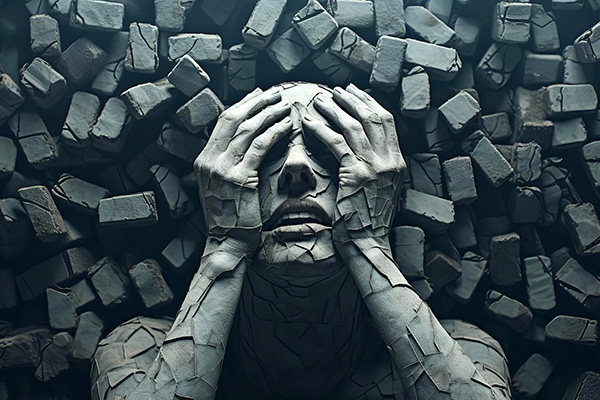sound
The Spiritual Power Of The Words You Speak
 Have you ever stopped to truly consider the words you speak? Most of us talk all day, every day, without realizing the impact of each syllable we send out into the world.
Have you ever stopped to truly consider the words you speak? Most of us talk all day, every day, without realizing the impact of each syllable we send out into the world.
Words are much more than just communication sounds. They’re vibrations, frequencies, and intentions. Whether spoken softly, shouted out loud, or whispered quietly to yourself, every word carries mystical energy.
In many spiritual traditions, the spoken word is seen as a powerful metaphysical force or divine power. It is a force of creation and transformation.
From magical incantations to sacred ceremonies, words have long been used to shape everyday reality, influence the world and improve life.
The earliest recorded reference to the power of speech dates back to ancient Mesopotamia. In the city of Uruk, magical incantations were found carved onto clay tablets dating back to approximately the 5th century BCE. These spoken spells were used for protection, healing, and influencing others, revealing a deep understanding of the energetic and powerful nature of speech as early as 2,500 years ago.
Around the same time, the ancient Egyptians believed in the concept of heka, which is often translated today as “magic” but really means “divine creative power.” They believed the gods used heka to create the world, and that humans could access this same creative power through sacred words called hekau.
Breaking Through The Walls Of Disconnection
Have you felt like you have been talking to brick walls in your relationships lately? If so, rest assured that you are not alone! This issue has been coming up more and more in my readings. Many of my clients complain that they feel like they are not being heard or that they are simply not getting through to people.
Many factors contribute to this feeling. With so many of us addicted to our phones and social media, it’s become very easy to be physically present but mentally elsewhere. This often makes any attempt to have a meaningful conversation feel like it’s taking place in an echo chamber.
We are surrounded by so many distractions these days — constant notifications, endless scrolling, and click-bait videos that often prioritize drama and misinformation over truth and depth. These distractions pull our attention away from what really matters: meaningful connection, both with others and with ourselves.
Modern life is busy and demanding. People are constantly juggling many responsibilities and stresses, and often feel drained or overwhelmed. Many of us rarely have the emotional bandwidth to fully engage in meaningful conversations.
On top of that, people are less likely to have face-to-face conversations, or at least make a phone call, as most communication these days takes place via text messages and social media comments. As a result, there is a growing lack of communication skills and many misunderstandings occur because people have difficulty expressing themselves clearly or actively listening when they are actually having a conversation in person.
The Soulful Practice Of Kirtan Chanting
 An ancient spiritual practice less known in the West has transformed my spiritual routine in recent years. It is known as kirtan a beautiful form of devotional chanting that originated in ancient India.
An ancient spiritual practice less known in the West has transformed my spiritual routine in recent years. It is known as kirtan a beautiful form of devotional chanting that originated in ancient India.
The term “kirtan” comes from Sanskrit and means “narrating, reciting, telling, describing” of an idea or story, particularly in a religious context. This enchanting practice weaves together music, meditation, chanting, and a deep sense of spiritual expression.
Kirtan is a central practice in the Bhakti Yoga tradition, which emphasizes love and devotion to a personal deity. It involves the repetitive chanting of mantras and divine names, traditionally in Sanskrit, accompanied by musical instruments such as the harmonium, tabla, and cymbals.
Traditionally, kirtans focus on chanting the names of deities like Krishna, Rama, or Sita. The kirtan leader sings a line and the congregation responds, creating a rhythmic and melodic interplay that is both meditative and invigorating.
While Kirtan remains rooted in its spiritual origins, it has gained global popularity beyond India and the Bhakti tradition. As the practice of yoga has boomed worldwide, kirtan too has seen an immense rise in popularity. It’s a testament to the universal appeal and transformative power of this captivating practice.
Kirtan events and gatherings are known for being welcoming and inclusive, focusing on the shared experience of chanting rather than strict religious adherence. Unlike the typical musical experience in spiritual settings, kirtan invites everyone to participate in a soulful, call-and-response chanting that creates a profound connection to the divine and brings people closer together.
Reclaim Your Personal Power With ‘Sat Nam’
 As a Kundalini Yoga teacher, I had the unique privilege of studying with Yogi Bhajan, the yoga master who introduced Kundalini Yoga to the Western world. Before he passed away in 2004, Yogi Bhajan gave me my spiritual name, Satya Kaur, which essentially means “princess” or “lioness” who embodies or strives to live by the principle of truth. It symbolizes a spiritual identity or path that focuses on integrity, authenticity, and the pursuit of spiritual truth.
As a Kundalini Yoga teacher, I had the unique privilege of studying with Yogi Bhajan, the yoga master who introduced Kundalini Yoga to the Western world. Before he passed away in 2004, Yogi Bhajan gave me my spiritual name, Satya Kaur, which essentially means “princess” or “lioness” who embodies or strives to live by the principle of truth. It symbolizes a spiritual identity or path that focuses on integrity, authenticity, and the pursuit of spiritual truth.
Our soul identity is the key to our life journey and spiritual growth. For this reason, at the end of each Kundalini Yoga class, the teacher says “Sat Nam” to the students. The class then repeats these words back to the teacher. Because of the name Yogi Bhajan gave me, this mantra will always have a special place in my heart.
The phrase is a Gurmukhi term that translates to “Truth is my name” or “True identity.” It is used as a yoga mantra to center the mind, connect with one’s true self, and remind us of our true essence and reality beyond the physical and mental constructs of the external world.
Saying “Sat Nam” to others is similar to the greeting “Namaste,” which means “The divine in me bows to the divine in you,” or “The spirit in me salutes the spirit in you.” For me, sacred affirmations like “Sat Nam” and “Namaste” have even more power and meaning now in the dawning Age of Aquarius.
The Mystical Phenomenon Of Levitation
 After seeing with my own eyes my yoga teacher levitate many years ago, I am convinced that levitation is not only possible, but that anyone can achieve it through a dedicated spiritual practice.
After seeing with my own eyes my yoga teacher levitate many years ago, I am convinced that levitation is not only possible, but that anyone can achieve it through a dedicated spiritual practice.
I used to attend weekly yoga classes led by a wonderful teacher who was 76 years “young” at the time. She was vibrant and lithe enough to make us younger ones look awkward by comparison.
One evening she invited her advanced students to watch a levitation demonstration. I must admit that I was a little skeptical and did not really know what to expect, but I am always open to new spiritual experiences.
She gave a talk before the demonstration, but I don’t remember much of what she told us. What I do remember very vividly is the incredible moment when she actually floated from her horizontal position on the floor. In a trance-like state, she rose gently and was suspended about a foot (30 centimeters) in the air.
Years later, I had another unusual levitation experience. After a wonderful week-long workshop at the Arthur Findlay College of Spiritualism and Psychic Sciences in Essex, England, a large group of teachers and students from the various classes gathered for a group meditation. The powerful energy in the room that evening was indescribable.
The Basics Of Chakra Balancing
 Did you know that we have two bodies? Not only do we have a physical body, but we also have a light body.
Did you know that we have two bodies? Not only do we have a physical body, but we also have a light body.
Our physical body is our visible and tangible form, made up of bones, muscles, organs and other tissues. It is our physical manifestation in this earthly realm and is subject to the laws of physics and biology.
Our light body, on the other hand, is the subtle energy system underlying to the physical body. It is the energetic bridge between our physical body and our higher, soul existence beyond the physical body. The light body is invisible to the naked eye and is subject to metaphysical or universal laws.
The concept of the ‘body of light‘ or ‘luminous body’ is found in various esoteric, occult, and mystical teachings and is also known as the aura, human energy field, astral body, subtle body, spirit body, radiant body, sidereal body, or celestial body.
The main feature of the light body are the chakras, an intricate network of energy centers or vortices that play a vital role in our physical, mental, and spiritual well-being. According to some teachings there are as many as 114 to 88,000 chakras, but this is not a commonly accepted understanding in the fields of yoga and energy healing.

